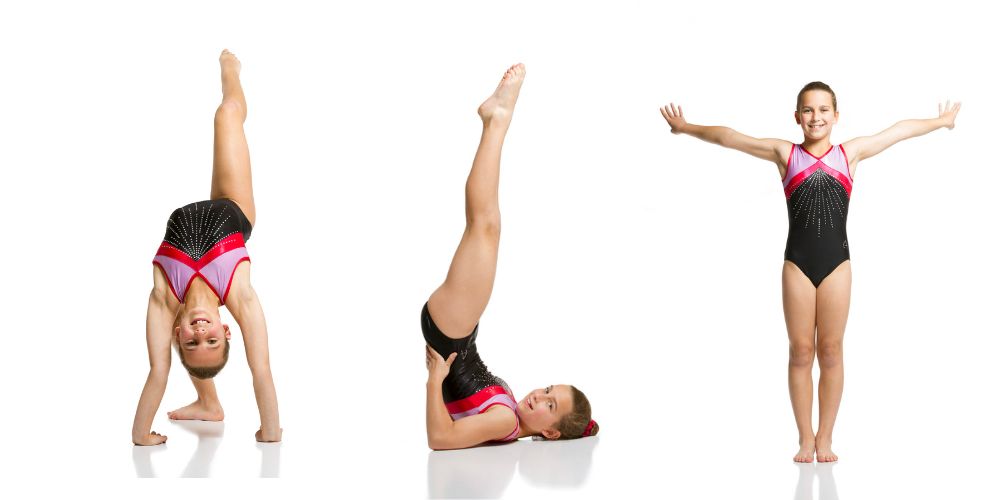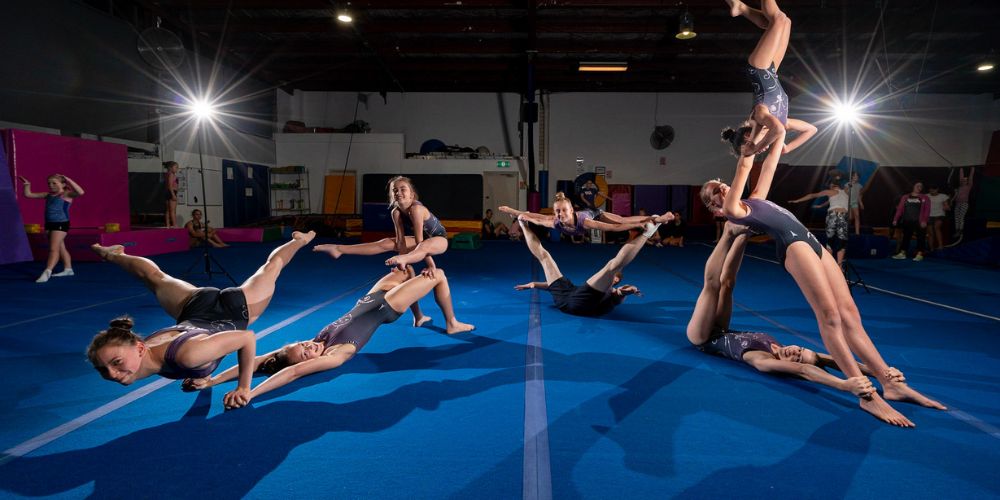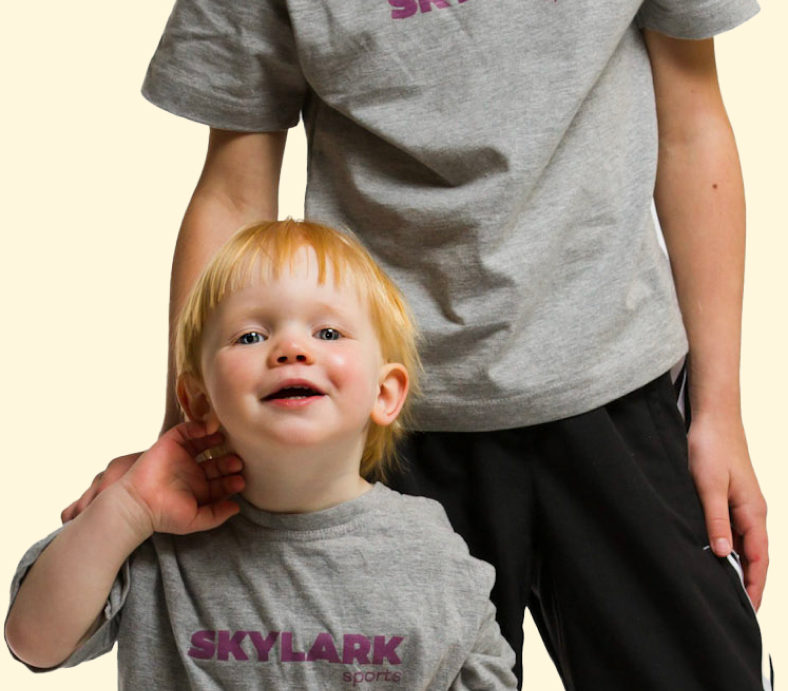Gymnastics is often perceived as an art form that requires specialised equipment and professional coaching. However, in reality, gymnastics is a sport that can be adapted to various settings, including the comfort of your own home.
So, if you've ever glanced at a gymnastics routine and wondered, "Can I do that at home?" – the answer is a resounding yes.
"How to do gymnastics at home without equipment?" is a common topic among fitness lovers, and I'm here to tell you that it's possible and satisfying. As someone deeply involved in the gymnastics community, I've seen firsthand the transformational effect of this sport for all ages.
But before you kick off your shoes and clear your space in your living room, understand first my essential reminders and a roadmap for mastering gymnastics moves right in the comfort of your living room.
Important Reminders Before Doing Gymnastics At Home
Before we get into the nitty-gritty of gymnastics moves you can do at home, let's talk about some crucial reminders. Safety first, right?
Warm-up
I can't stress this enough: warming up is non-negotiable. Before attempting any gymnastics exercises at home, make sure to warm up your body properly. Stretch your muscles, loosen your joints, and get the circulation circulating. It makes a huge difference.
To prepare your body for the demands of gymnastics, try activities like leg swings, arm circles, and light running. This not only lowers your risk of injury, but it also improves your performance during the actual manoeuvres. Remember that a well-executed warm-up sets the tone for an effective gymnastics routine.
Clear Your Space
Gymnastics is a sport that requires accuracy and spatial awareness. Consider this: you're in the middle of a beautiful handstand when you accidentally knock over a chair. Isn't that not ideal? Designate a clear and large location for gymnastics to avoid any unforeseen collisions with furniture or other household items.
A clutter-free zone reduces the possibility of accidents and allows you to expand and express yourself fully in each step. So, before you begin your gymnastics routine, run a quick scan of your chosen area to verify it is free of obstacles.
Know Your Limits
Being aware of your body's cues is crucial if you want to become a master gymnast. Pay attention to what your body tells you whenever an action seems overly strenuous or discomfort develops.
Begin with the fundamentals and work your way up at a speed that works for you. Overdoing it might result in setbacks and injuries, making your gymnastics adventure less enjoyable overall. Remember that it's an ongoing, fulfilling process rather than a race. Your body will eventually appreciate you for accepting the learning curve.
Gear Up for Safety
It's not necessary to have an entire closet full of gymnastics leotards. Still, appropriate clothing is essential for both performance and safety. Choose apparel that fits well and stretches to accommodate your entire range of motion. To prevent hindrance during dynamic movements, consider pulling back long hair, removing any jewellery, and tightening your shoelaces.
Proper clothing helps you feel more comfortable and confident overall and eliminates potential accidents in gymnastics, where accuracy is crucial. Thus, ensure you are properly prepared; your gymnastics routine will appreciate it.
Stay Hydrated
Not only is it advised, but drinking plenty of water is the gasoline that propels your gymnastics adventure. It is crucial to approach your practise with the same level of commitment as you would at a professional gym, even when you are in the comfortable surroundings of your own home. You lose fluids as you exert yourself and move dynamically. Therefore, you need to replace them.
A reliable water bottle should always be close at hand during your workout. Drink water regularly to help your body heal, increase endurance, and keep your energy levels at their peak. Staying well hydrated is essential for maintaining optimal performance and making the most of every gymnastics session, not just for avoiding dehydration.
Use a Mirror if Possible
When practising gymnastics at home, if you're lucky enough to access a full-length mirror, consider it your hidden weapon for improving. Mirrors give instant feedback and let you see your form, posture, and technique. It's similar to having a personal coach who can provide invaluable insights.
When performing manoeuvres that need exact alignment, make use of the mirror. When performing a handstand, are your shoulders square? Do you perform a cartwheel with your body stretched correctly? Your self-correction ally is the mirror, which may assist you with modifications and ensure every move is performed skillfully. It's a straightforward but powerful tool that improves the calibre of your
Don't Forget to Cool Down
Remember the significance of a decent cool-down when you finish your at-home gymnastics workout. Like warming up prepares your body for action, cooling down greatly impacts your general health. Target the muscle regions you used during your practise by including static stretches.
There are several uses for the cool-down period. First off, carefully extending muscles helps to increase flexibility. Thus, your range of motion is improved, and the chance of injury is decreased. Second, it's essential for reducing muscular discomfort and facilitating quicker recovery.

Gymnastics Moves You Can Do at Home Without Equipment
While it can be challenging to do gymnastics at home without equipment, you can still do many exercises.
Here's what you can do:
Cartwheels
How to: Locate a clear area, firmly place your hands on the ground, kick your legs over, and presto! You've just executed a timeless manoeuvre. Finding your equilibrium may need a few tries, but that's all part of the learning curve. In addition to being visually stunning, cartwheels are an excellent way to increase upper body strength and coordination.
Handstands Against the Wall
How-to: Using a strong wall as support, place your hands approximately a foot apart and kick your legs upward. This exercise is a game-changer for strengthening the shoulders and core and acclimating the body to the upside-down realm of handstands. For an added challenge, try extending one leg off the wall as you build confidence.
Bridge Pose
How to: Raise your hips towards the ceiling while lying on your back with your hands by your ears. The bridge position strengthens your back muscles and increases flexibility. Keep your core engaged throughout the exercise and concentrate on a controlled rise. It's a move that blends strength and grace beautifully.
Forward Rolls
How-to: The significance of grasping the fundamentals should be noticed. Roll forward, tuck your chin, and experience the rush of perfecting a basic gymnastics move. Not only are forward rolls great for novices, but they also help you become more aware of your body and enhance your coordination.
Lunges and Splits
How-to: Gymnasts are known for their incredible flexibility; you can achieve it right at home. Incorporate lunges and splits into your routine to improve flexibility in your legs and hips. These stretches enhance your gymnastics performance and contribute to overall lower body strength.
Pike Jumps
How-to: Stand with your feet together and arms raised overhead. Jump off both feet while keeping your legs straight, forming a "V" shape in the air. Land with control and repeat. Pike jumps are a fantastic way to improve your explosive power, balance, and overall coordination.
Straddle Hold
How-to: Sit on the floor, legs stretched wide into a straddle position. With a straight back, lean forward and reach towards the ground. Hold the stretch for as long as it is comfortable. This move targets your core, inner thighs, and hamstrings, enhancing strength and flexibility.

Is Learning Gymnastics at Home More Effective?
Now, you might be wondering – is it effective to learn gymnastics at home without the guidance of a professional coach?
Pros of Learning Gymnastics at Home
Flexibility and Convenience
Gymnastics at home allows you to practise on your own time and speed. This convenience is especially helpful for people who lead hectic lives or prefer to learn in a quiet environment.
Cost-Effective
There's no need for pricey gym subscriptions or specialised equipment while learning gymnastics at home. You don't have to break the money to start your gymnastics career with a small investment.
Personalised Learning
Practising at home makes learning more personalised. Without the interruptions or time limits frequently present in group lessons, you can concentrate on certain abilities or areas that need work.
Cons of Learning Gymnastics at Home
Lack of Professional Guidance
A notable disadvantage is a qualified coach's need for instant, in-person coaching. Form correction, instantaneous feedback, and technique assurance are all crucial elements that can be difficult to handle without professional guidance.
Limited Equipment and Space
Even while you can perform many fundamental gymnastics exercises at home without any equipment, the range and difficulty of the exercises can be restricted by the lack of specialty equipment like bars and beams. Furthermore, space restrictions can affect how some moves are performed.
Safety Concerns
Safety is one of the most important things in gymnastics. Inadequate form raises the possibility of injury without a trained coach's supervision. A regulated gym setting better fits some more difficult movements.
Finding a Balance
While learning gymnastics at home has advantages, it's crucial to strike a balance. Consider combining at-home practice with occasional visits to a gymnastics centre. Professional coaching, access to specialized equipment, and the camaraderie of fellow enthusiasts in a gym setting can complement your at-home efforts.
Frequently Asked Questions
Is it possible to learn gymnastics without a mat?
Certainly! Although it offers additional padding, a gymnastics mat is not required. You can practise the most fundamental techniques on a carpeted or grassy area. Just be careful and ensure no possible hazards in your practise area.
What happens if I can't perfect a move?
Gymnastics is a process rather than a final goal. If a certain move gives you trouble, dissect it into smaller parts. Practise each component separately before assembling them progressively. Challenges shouldn't deter you; they're a necessary component of learning.
How often should I train out at home for gymnastics?
Your fitness level and schedule determine the frequency you practise at home. Aim for three or four sessions a week, at the very least, concentrating on various gymnastics skills such as strength, flexibility, and skill-specific drills. The secret is consistency, so establish a schedule that suits you.
Conclusion
The importance of having access to top-notch equipment and skilled instruction cannot be overstated. However, you can advance in your gymnastics adventure at home provided you are committed, have a well-thought-out plan, and have the correct attitude.
Being consistent is crucial. Establish reasonable goals and a timeline, then follow it. You'll strike a balance that suits you if you mix in-home practise with sporadic trips to a gymnastics facility for more specialised instruction.
Remember, the key is to have fun, stay safe, and celebrate your progress, no matter how small.

